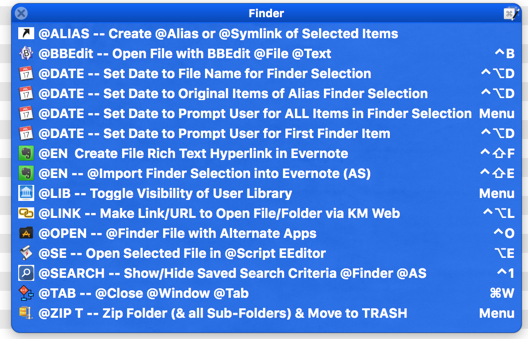I'm curious. Were all of these 512 shortcuts global shortcuts, that worked in all apps?
Out of my 1250+ KM macros, the most I have for any one app is about 40, and that's for Evernote.
Are you aware that you can overload KM hotkey triggers, meaning that you can assign the same trigger to multiple macros that are active only in different apps?
OR, if the macros are active at the same time, you will get an automatically generated conflict palette to select the macro you want, most of the time by just one keystroke.
For example, I have 3 Finder macros that deal with dates, and they are all triggered by ⌃⌥D:

I use the same trigger in Evernote:

Obviously the "D" is an easy-to-remember mnemonic, and I use the same modifer keys in both Finder and Evernote to reinforce my memory of those.
I have one macro that is my master for displaying a palette for any Group, whether or not that Group was setup to use a palette. It uses ⌃⇧P, and based on the app that is active, it shows the palette for the associated macro group, even though I have not specifically designed a palette for that group.
For, example, if Finder is active, I get this:

Notice that most of those macros have their own hotkey, which are also always active when Finder is frontmost. Using the master macro palette allows me to do that. For more info see MACRO: @Palette Show/Hide Palette for @FrontMost App.
My point is that rather than having a tree of macro palettes, maybe there is a better, or at least alternate method for KM.
My own design for using palettes is a work-in-progress, and I'm still very much learning how to use them. There are others here that have done some very creative things with palettes.
Each of us have our own preferences and work styles. The great thing about KM is that it is very flexible and allows each of us to design what works best for ourselves.
Good luck, and let us know how it goes.